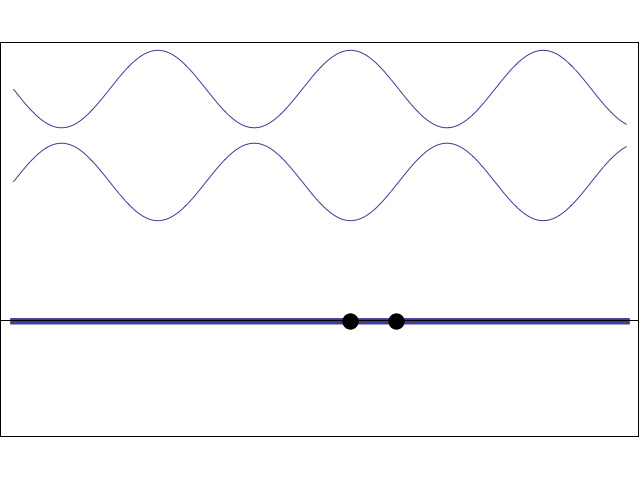
Before we were dealing with just a single wave. But what happens when one wave runs into another? It turns out that when two waves occur together, at each moment in time the values of the two waves add together. This is known as the principle of superposition. As a result, a new resultant wave is created. This interaction between two or more waves is known as interference. In technical terms, when two or more waves are in a medium, they may pass through each other without disturbing the other, and wherever they 'collide', the net displacement is the sum of the waves.

When waves combine and the resultant amplitude is larger, this is known as constructive interference. When waves constructively interfere, they add and strengthen to create a resultant wave that has a larger amplitude than before.

When waves are offset a little and the crest of one wave lines up with the trough of the other, we get destructive interference. With destructive interference, waves tend to cancel and create a weaker wave (lower amplitude).

Dr. Dan Russell of Pennsylvania State University has a very good website, full of excellent animations that illustrate different wave phenomena. Below is one such animation that nicely demonstrates interference between two waves. You should check out his website here.

Architects and engineers use this information when they design buildings like theatres, auditoriums, gyms, concert halls, stadiums, and other places and they take interference into account. The shape of the building they create is based on interference patterns and on amplifying certain sounds (constructive interference) and attenuating (destructive interference) others.